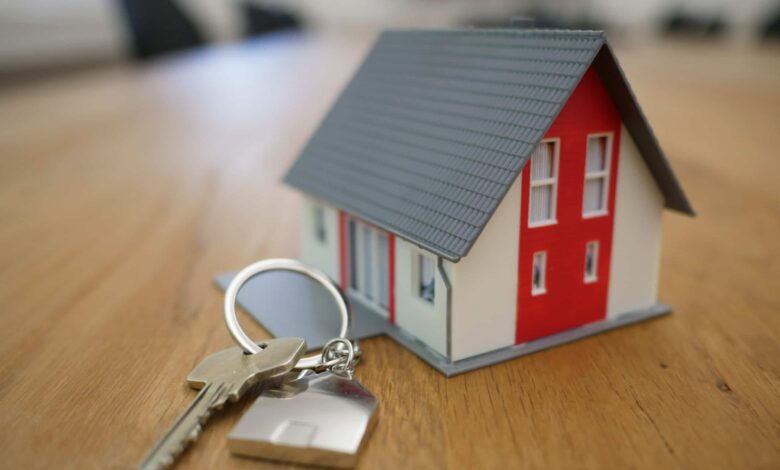SAP Calculations for Conversions: The Definitive Guide for Professionals

As the world shifts toward sustainability and energy efficiency, adhering to regulatory requirements has become a cornerstone of modern construction and renovation projects.
Among these requirements, SAP calculations for conversions stand out as a critical process that ensures energy compliance and boosts the performance of buildings. This comprehensive guide will delve into the essentials of SAP calculations, with actionable insights for professionals managing conversion projects.
Why SAP Calculations Matter for Conversions
Property conversions are gaining momentum due to increasing demand for residential spaces and creative reuse of existing structures. However, with these projects come complex challenges, including compliance with energy regulations. SAP (Standard Assessment Procedure) calculations are a legal necessity for conversions, providing a detailed measure of a building’s energy performance.
In addition to being mandatory, SAP calculations are an opportunity to enhance the value, efficiency and sustainability of your projects. Whether you’re transforming a warehouse into flats, dividing a large house into smaller units or repurposing an old building, understanding the intricacies of SAP calculations will save time, reduce costs and ensure success.
What Are SAP Calculations?
SAP calculations are the UK government’s standardised method for assessing the energy efficiency of residential buildings. They are a crucial part of demonstrating compliance with Part L of the Building Regulations, which governs energy performance.
The calculations evaluate a range of factors that influence a property’s energy use and environmental impact, including:
- Fabric Energy Efficiency: U-values of walls, floors, roofs and glazing.
- Heating and Hot Water Systems: Efficiency and type of systems used.
- Ventilation and Air Tightness: Performance of ventilation systems and the extent of air leakage.
- Renewable Technologies: Integration of solar panels, heat pumps or other energy-efficient technologies.
- Lighting and Energy Use: Efficiency of lighting and electrical systems.
In short, SAP calculations determine a building’s energy demand and environmental footprint, resulting in a numerical score and an Energy Performance Certificate (EPC).
When Are SAP Calculations Required?
For conversions, SAP calculations are mandatory in specific scenarios, including:
Change of Use
When a property’s purpose is altered, such as converting an office into a residential unit, SAP assessments ensure the new use meets energy standards.
Sub-Divisions
Splitting a single property into multiple dwellings requires separate SAP calculations for each new unit.
Major Renovations
When over 25% of a building’s thermal envelope is being renovated, compliance with updated energy standards becomes necessary.
What Do SAP Assessors Evaluate?
SAP calculations for conversions focus on a range of elements that collectively determine energy efficiency. Let’s break down these components:
Thermal Performance of Building Elements
The U-values of walls, roofs and floors are central to SAP assessments. For conversions, upgrading insulation is often required to meet modern standards, especially in older buildings.
Windows and Glazing
Energy-efficient glazing plays a significant role in reducing heat loss. SAP calculations consider factors such as window frame materials, double or triple glazing and solar gain coefficients.
Heating and Hot Water Systems
Modern, efficient heating systems (e.g., condensing boilers) and proper controls can improve SAP ratings. The assessment also accounts for the efficiency of hot water systems.
Ventilation and Air Tightness
Adequate ventilation is essential for maintaining indoor air quality without excessive energy loss. SAP calculations evaluate mechanical ventilation systems and the building’s air permeability.
Renewable Energy Integration
Incorporating solar PV panels, heat pumps or other renewable technologies can significantly boost a building’s SAP score and future-proof its energy performance.
Lighting and Internal Energy Use
Efficient lighting systems and low-energy appliances contribute to better SAP ratings, reflecting the building’s overall energy demand.
Challenges in SAP Calculations for Conversions
Conversions are rarely straightforward and several challenges can complicate SAP compliance:
Space Limitations
Existing structures may lack space for insulation upgrades or modern heating systems, making compliance more complex.
Historic and Listed Buildings
Restrictions on altering heritage properties can limit options for improving energy performance, requiring creative solutions.
Mixed-Use Developments
Properties with both residential and commercial elements often need separate SAP assessments, adding to the project’s complexity.
Unknown Existing Conditions
Older properties may have hidden issues, such as inadequate insulation or poor ventilation, which can negatively affect SAP ratings.
Steps to Achieve Compliance with SAP Calculations
Achieving compliance with SAP calculations for conversions requires a strategic approach. Here’s how to ensure success:
Engage a Qualified SAP Assessor Early
Involve a certified SAP assessor at the planning stage to identify potential issues and recommend solutions. Early engagement reduces the risk of non-compliance and costly delays.
Conduct a Detailed Survey
A thorough survey of the existing property helps assess its current performance and identify areas for improvement, such as insulation upgrades or ventilation enhancements.
Prioritise Fabric First
Improving the building envelope – walls, roofs, floors and windows – should be the first step. This minimises energy loss and reduces the demand for heating and cooling systems.
Incorporate Renewable Technologies
Even small-scale renewables, like solar thermal systems, can significantly enhance the SAP score. Explore options that align with the building’s design and budget.
Test and Verify
Air permeability testing and on-site inspections are critical to verifying compliance. Addressing issues during construction avoids costly rework.
Tools and Resources for SAP Calculations
Professionals can streamline SAP calculations by using the following tools and resources:
Design Software
Tools like Elmhurst Energy, SAP EPC and DesignBuilder simplify energy modelling, allowing you to test various scenarios.
Regulatory Guidance
The UK government’s SAP guidelines provide a comprehensive overview of requirements and best practices.
Professional Networks
Collaborating with architects, assessors and building control officers ensures all aspects of compliance are addressed.
The Future of SAP Calculations
SAP calculations continue to evolve in response to global sustainability goals. Professionals should be aware of emerging trends, including:
Stricter Standards
Future revisions to Part L are expected to raise energy efficiency requirements, emphasising the importance of renewable technologies.
Integration of Smart Technologies
IoT-enabled systems and AI-driven energy management tools are becoming integral to achieving high SAP scores.
Net Zero Targets
The UK’s commitment to net-zero emissions will drive more rigorous energy performance benchmarks for all building types.
Benefits of Accurate SAP Calculations
While meeting regulatory requirements is essential, accurate SAP calculations offer additional advantages:
Cost Savings
Energy-efficient buildings have lower operational costs, benefiting occupants and enhancing property value.
Market Appeal
Buyers and tenants increasingly prioritise energy-efficient properties, making SAP-compliant buildings more attractive.
Sustainability
High SAP ratings align with environmental goals, contributing to a greener future.
A Strategic Approach to SAP Calculations
For professionals managing property conversions, SAP calculations are a critical part of the process – not just a regulatory hurdle. By embracing energy efficiency and leveraging the expertise of SAP assessors, you can deliver projects that are compliant, cost-effective and environmentally friendly.
Whether you’re navigating the complexities of a listed building or optimising a straightforward conversion, understanding SAP calculations equips you with the tools to succeed. Start planning early, prioritise energy efficiency and stay ahead of evolving standards to ensure your projects stand out in a competitive market.



